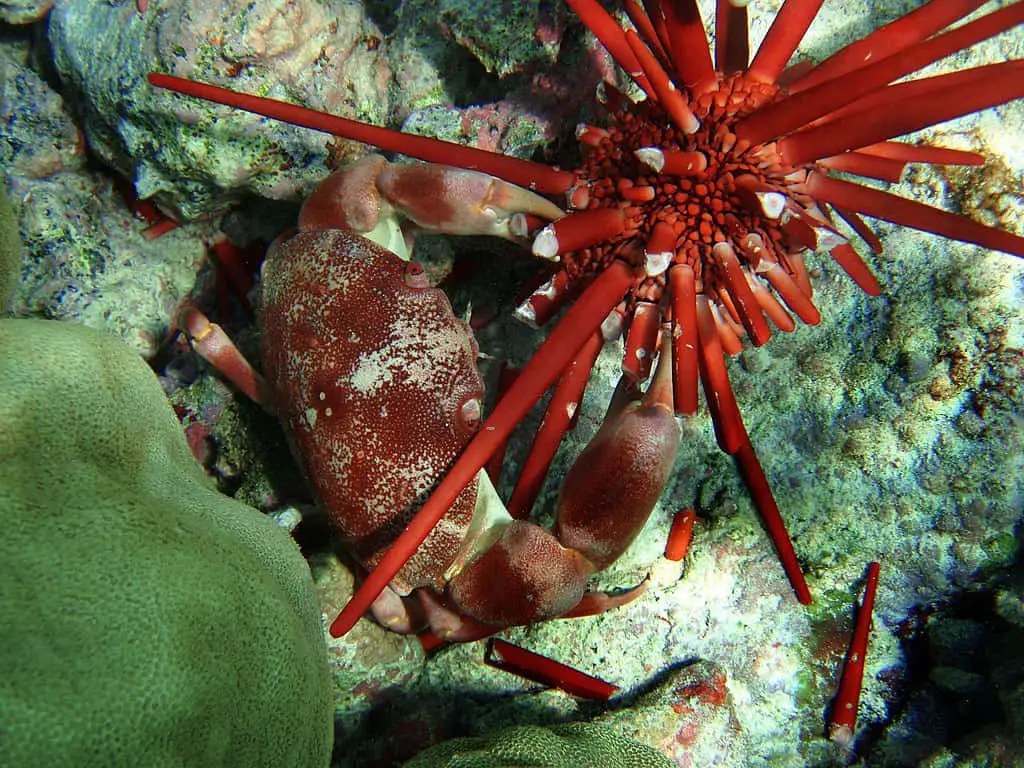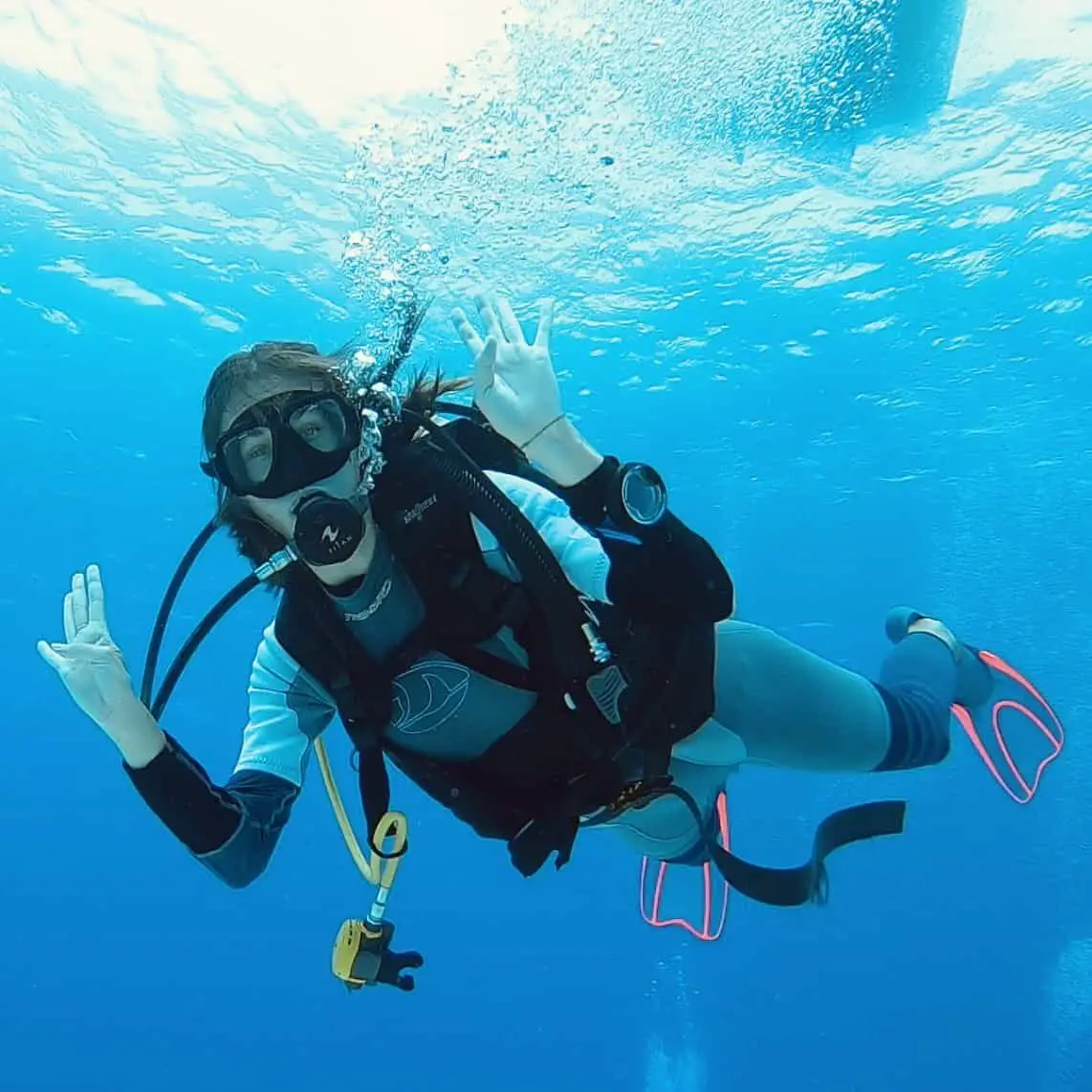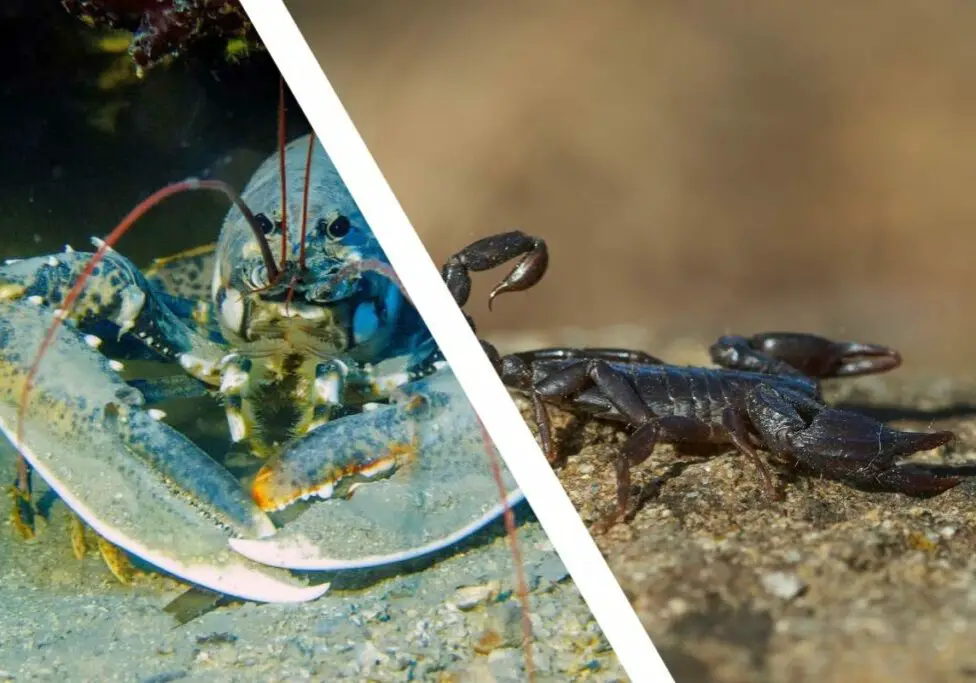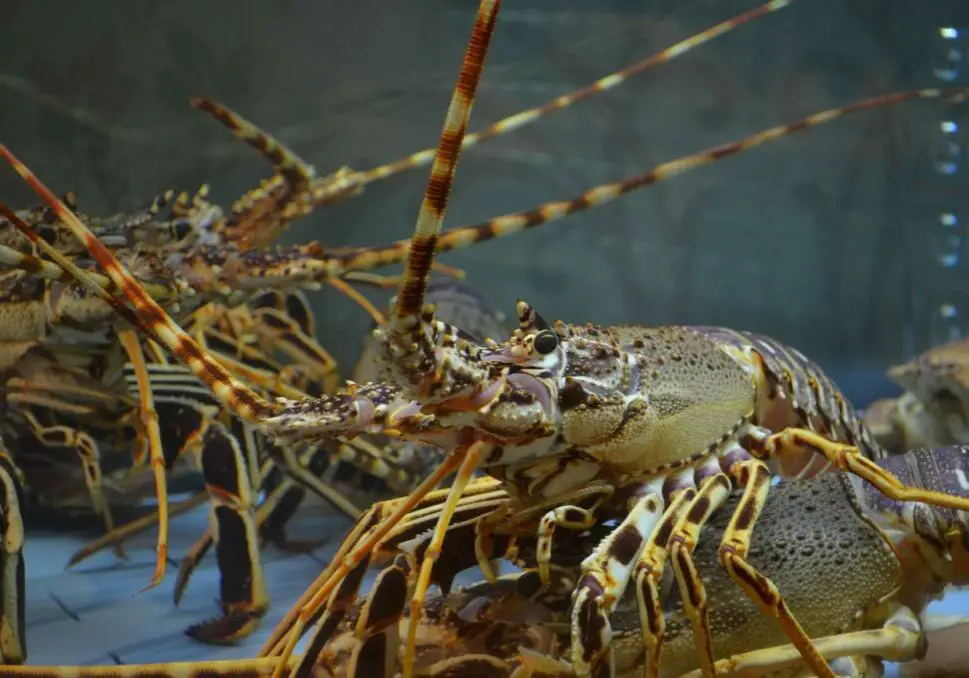What Animals Eat Sea Urchins? (Explained)
Most of us know sea urchins as spiky animals that we should avoid touching. Their sharp venomous spines can be extremely painful to us as well as to their marine predators. When I found sea urchins for the first time, just like you wondered if there are any animals that actually want to eat them. In this post, we’ll talk all about that but let’s start with a quick answer:
Sea urchins are preyed upon by marine animals like triggerfish, wrasse, crabs, lobsters, wolf eels, california sheephead, and sea otters. They’re also being eaten by land animals like arctic foxes, and birds.
However, that certainly doesn’t tell the whole story. Below I’ll explain how these animals eat sea urchins, if humans eat sea urchins, and what other dangers sea urchins have to face. Furthermore, I’ll explain what sea urchins eat and how they eat.
Common predators of sea urchins
Triggerfish
Triggerfish are brightly colored fish living in tropical and subtropical oceans with the largest population number in the Indo-Pacific ocean. These fish are known for being quite aggressive towards other fish or even divers and snorkelers when guarding their nests. They’re also territorial and have been seen to remove sea stars from their province. They pick them up with their mouth and drop them some distance away.
Their typical diet mainly includes creatures with protective shells and spines. Sea urchins are their favorite target. Triggerfish can avoid sea urchins’ spines by flipping them upside down with their mouths. This way, the unprotected underside with fewer spines is exposed, and triggerfish can eat the meat out of the spiny shell.
Wrasse
The wrasses are brightly colored fish mostly living in tropical and subtropical waters of the Atlantic, Indian, and Pacific Oceans. They are known for their characteristic thick lips and jaw structures.
Their diet mainly consists of small crustaceans and invertebrates, including sea urchins. Studies showed that some wrasse species are able to use a tool, such as a rock to smash open sea urchins.
Crabs
Crabs, like other shellfish, are equipped with powerful pincers. They use it to grip things, fight, catch the prey and tear it apart to eat. This is exactly how they can feed on sea urchins. Once they hold sea urchins, they are able to crash them and eat the interior body of these marine creatures.

Lobsters
Lobsters play a significant role in regions where sea urchins’ numbers increase dramatically. These outbreaks are not suitable for our ecosystem’s balance, which is why lobsters are very important predators.
In some places, the catch limits apply to increase the number of lobsters. It’s important to increase their number so they can feed on seas urchins and decrease their alarming population. It’s a major problem in some regions of Australia, like Tasmania.
They’re well equipped to eat sea urchins. Like crabs, they’re immune to the venomous spines of the sea urchin thanks to their chitinous exoskeleton. They crash sea urchins’ bodies with their pincers and eat their interior bodies.
Wolf eels
The wolf eels belong to the Anarchichadidae family (wolf fishes) and are known for their terrifying face and jaws. They mostly live in the North Pacific Ocean but are also found along the east coast of Russia and the Sea of Japan. These animals can grow to even 7-8 feet (2.5 m).
They grab sea urchins in their powerful jaws and crush their shells in their mouths.
California Sheephead
California sheepshead is species of wrasse that I mentioned above but is definitely worth mentioning as a separate predator. They mostly live in the eastern Pacific Ocean and are popular in Monterey Bay, California, and the Gulf of California.
Their diet mainly consists of sand-rock reef habitats, including sea urchins. Their large jaws and sharp teeth allow them to crush sea urchins’ shells and feed on them. They play a critical role in regulating sea urchins’ populations in kelp forests.
Sea otters
Sea otters, unlike previous predators, are sea mammals that can walk on land as well in the ocean. They live in coastal waters in the North Pacific ocean.
They are carnivorous animals and their diet consists almost exclusively of marine invertebrates like mussels, worms, and sea urchins. Sea otters smush sea urchin’s shell against a rock until it cracks and opens. They can also use their powerful teeth to open the shell and eat the inside.

Arctic foxes
Arctic foxes live in Arctic regions of Europe, Asia, Iceland, Greenland, and North America. These animals are well adapted to living in cold environments and are known for their thick, warm fur that helps them stay camouflaged.
They mainly feed on birds and small mammals but coastal arctic foxes will also eat shellfish, like sea urchins and other invertebrates. Their sharp teeth help them to break the shell and eat the inside.
Birds
Birds, especially seagulls, also eat sea urchins. However, they’re not that big predators as mainly they eat dead sea urchins that were washed up the shore. They use their beaks or pick them up, and they can swallow small sea urchins whole.
Do humans eat sea urchins?
It may seem strange to eat sea urchins because of their spiky skin but yes, humans eat sea urchins. Some people eat them raw or serve them as an addition to pasta. Sea urchin can be flavourful and savory. They are a popular meal in Japan, Chile, the Mediterranean, and even the West Coast of the United States.
Other dangers to sea urchins
As we already know, even though sea urchins’ spines provide great protection, there are predators that are not afraid of them. They are also other few things that may cause their death like diseases, or water quality.
“Bald Sea Urchin Disease” is one of the most prevalent diseases. The infected areas of the sea urchin’s body turn green, and spines fall off. If the infection covers less than 30% of its body, the animal tends to survive. However, it’s still a much easier prey for its predators. If the disease spreads more extensively, it may be fatal for sea urchins and cause death.
The water quality is the next reason for sea urchins’ death. Sea urchins thrive under specific environmental conditions that include proper water salinity and PH. Water with many pollutants and global warming (higher water temperature) can also cause the death of sea urchins.
What is interesting, is that sea urchins look very different after they die. If you’re interested in what happens to them after their death, you can read my other blog post where I talk all about that.
What do sea urchins eat?
Sea urchins eat whatever prey is available. They mostly feed on algae, plankton, kelp, periwinkles, and sometimes barnacles and mussels. They eat by scraping food off rocks and grinding up using their sharp teeth, called Aristotle’s lantern.
You may also like:

Welcome to Bubbly Diver!
I’m glad to see you here. This blog is created for all marine creature lovers by a bubbly diver - me, Dori :)


